|
|
|
 |
|
|
|
We were stoned so it was difficult. Pooler was testing Skippy and flashing hands and posing. Skippy kept shouting out sums. Pooler would grin or shake his head with impatience. De Loquela Digitorum was a very difficult tongue because it took so much mediation. So much secondary thought and translation. Now the fucker is screaming Albinus at poor Skippy: "I saw a man holding 8 in his hand, and from the 8 he took 7, and 6 remained." Muthafuka! I struck the nearest mudra to the sum imagined and prayed for luck. How did men use numbers effectively before the age of Quanta? Before the computer, or even the blackboard? Well, some of them had access to Counting Boards - what we call "Counters" today in stores and markets. Some used an Abacus - if they had such an exotic instrument of quantity lying around. But mostly they followed the Venerable Bede and flashed digits and poses. |
|
 |
Bede (673-735 AD) was an English Monk whose best known work was the eponymous: Historia ecclesiastica gentis Anglorum (The Ecclesiastical History of the English People) which gained him the title "The Father of English History". He prefaced a Treatise on Chronology and time with an explanation of "the necessary and ready skill of finger reckoning." You could signify the numbers from 1 to 9 by bending specific fingers. Bent "little finger" = 1, bent little finger + ring finger = 2, etc. Since 6 was a "perfect number" it was indicated by bending the ring finger by itself. 10 and multiples of 10 were made by touching the thumb to certain joints of the fingers. Higher numbers set you into a dance: fingers, hands, arms, elbows, and torso were all used by touching them in certain sequences. If you extended your arm and pointed your thumb at your belly button that = 50,000. Big, big numbers guttered around the crotch.
|
|
|
| The Abacus to the right is a modern rendition - during the medieval, Europeans used the word to describe a Counting Board on which lines served in place of wires, and pebbles or counters were shifted about instead of beads. Most serfs and the vast majority of the uneducated and illiterate could not use an Abacus and had to rely on "Finger Reckoning." As of yet there was nothing to denote Place Value or Zero - though you could touch Finger Joints and indicate 10s, while the next meant 100s, etc. The only way to represent Zero - if that idea ever came up - was for the fingers and the hands to do "nothing." What we take for granted - the ability to Find and Represent "Quantity" - was not only difficult, but fraught with psychological problems. Numbers, in the medieval, meant things more than "simple" quantities and getting past that was the triumph of the Renaissance over Symbolism. |
|
 |
|
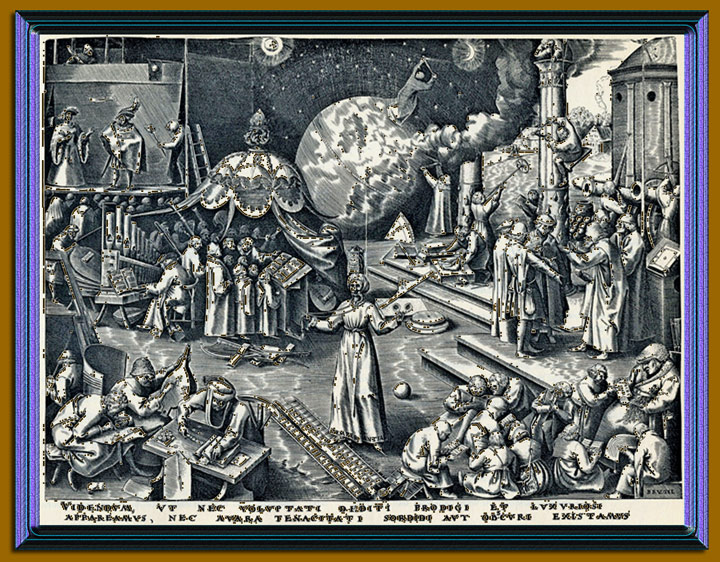 |
As an example of the problem between the "Quantity" of numbers and their Symbolism - their "Qualia" - Here's the Venerable Bede on the number 30: "When you say thirty, join the nails of the index finger and thumb in a gentle embrace." then he quotes St. Jerome who, in his famous bitter diatribe against Marriage claimed that the number 30 was equated with Matrimony: "for the very joining of the fingers, as if embracing and allying each other with a tender kiss, depicts the husband and the wife." Woe be to the poor dumb bastard that wrote an essay in 30 pages on the Trinity - because the Trinity is not modeled on "Joining" or on Conjugal concepts. The Trinity is a Mystery and not an Addition. Get the point? Numbers, Quantities, were not yet pried loose from the Symbols they were wrapped in. Don't even think about 69. Or 8, when it shakes off the Rampant and goes Couchant. |
|
|
|
The Image above is by Pieter Bruegel the Elder. It's a 1560 Print called Temperance which was then the "most prestigious of the ancient virtues." The Latin Bromide below says: "We must look to it that we do not give ourselves over to empty pleasures, extravagance, or lustful living; but also that we do not, because of miserly greed, live in filth and Ignorance." Temperance is the tall figure, lower middle. All around her Bruegel pictures for the astonished age the last 100 years of "Progress." Astronomers chart. Cartographers measure. One plucky Etic stands tip-toed on the North Pole and measures the Angle between the Moon and a star. The print is chaotically chock-a-block with canons, squares, compasses, plumb bobs, counting boards, musical notations, large Biblia Paupera. All of nature is pictured as surrendering to the "Quadrant and T square." The 20th Century Irish Poet W.B. Yeats said it best: Measurement began our Might. And that's what Bruegel has given us: a Pictorial Ode to Measurement. To Quanta. |
|
| Whether or not Qualia actually exist is a huge argument, but the good news is that we don't have to go there. They are "mental constructions" and that's enough. Qualia are composed of subjective feelings mostly. What the fuck is Red, for instance? Or - is your Orgasm the same as my Orgasm? Or consider the famous case of Mary, "the brilliant color scientist." Mary is born, raised, and imprisoned in a Black and White room. No color whatsoever. She is provided black and white books, with black and white pictures and a black & white TV. Over time she studies light and color and slowly becomes the world's authority on Color. Mary knows everything it is possible to know about color. Except that she has never seen color and therefore has no experience of it. Suddenly she is released and she walks outside into a color laden garden and starts crying out: "So that is Red! So that is Green ..." But wait. She already knows everything about red and green. Doesn't' she? |
|
 |
|
|
What more was there to learn? Stupid question, right? Everyone thinks they can answer this. Until they try. Qualia is murderously difficult to discuss because it only exists in our heads and there are very few intuitive ways of comparing and contrasting your version of Red or Orgasm and mine. Pointing to the same color swatch when asked what is red is not proof that the exact same "experience" of red exists in each of our heads. Before the Renaissance Western Man was adrift in Qualia - that which cannot be "Scientifically" measured. That which existed only in our heads. Men lived then in the contents of Symbolic Space and Allegorical Space, but not yet in the contents of Physical and Exact Space. Plato wrote "that when the Soul depends on the Senses for information, `it is drawn away by the body into the realm of the variable, and loses its way and becomes confused and dizzy.'" Neither Plato nor Aristotle trusted Number's ability to tell the Truth of things. Truth was not yet dependent on the Senses. Take the example of "Medieval Numbers." |
|
|
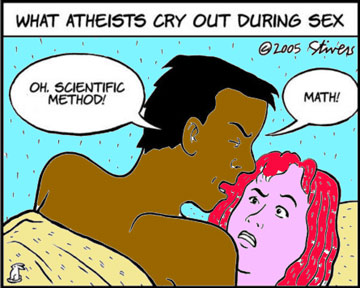 |
|
|
Medieval Europeans did not use Numbers for Accuracy; they used them for Effect. And for Affect. They were not trying to be Exact. That's Modern. They were trying to show you how they felt about a situation. The casualties of battles were reported on the basis of how important the battle was. So when 30 Moors died holding off the Christians that did not fit the bill as an accurate portrayal of the seriousness of the fight. They wrote it down as 3,000. Or 30,000 if the Blessed Virgin Mary led the Charge. Or Santiago Matamoros - who was said to have slain thousands of Sand-Niggers before lunch. Then he ate their fuckin' heads FOR Lunch. You cannot read Medieval chronicles for `Facts.' They are filled with `Truths' - not facts. Killing a Legion of Moors is the Truth of the Sitz. The Fact that only 30 died is of no use. Moderns treat Numbers as Neutral, "free of all moral and emotion value." For the Monkeys of the Medieval numbers were laden with Qualia and Symbolic baggage. 3 is not the square root of 9 as much as it is the Trinity. They accepted ambiguity and imprecision to get at the `Real' meanings of numbers - their place in the Correspondences which informed the Heavenly Jerusalem with the Earthly Jerusalem below. Men and boys still lie about their drinking skills and their Sex conquests in the same way. With Medieval Numbers. Here's a quick illustration of the mentalité: having 3 of anything makes a Monkey a Mutant and we are not prone to find mutants attractive. I'm betting this 3 Titted young thing has no problems getting dates. Tits are not about Quantity; they are about Qualia. Francis Bacon used Patterns in Numbers to predict Islam's downfall, not Historical Events & Measurements. Mathematics to the Qualia Mentalité was used to express Shock & Awe. Numbers expressed what was beyond and in back of Reality and not the things you were counting. |
|
 |
|
|
|
|
|
|
|
|
|
|
|
|
|
|
|
|
|
|
|
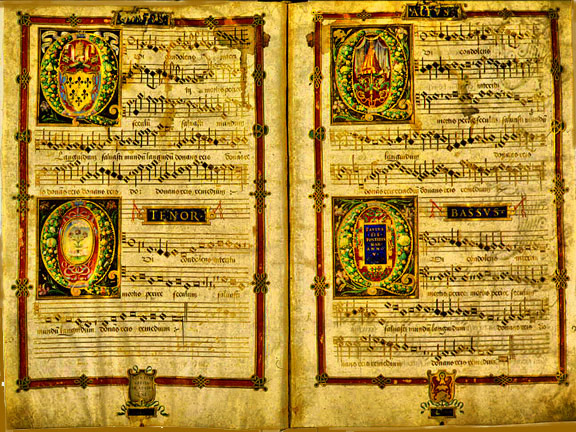 |
Quantification came to the Euro-Mentalité via the Route de Rock & Roll. Thru the elaboration of Gregorian Chant. And only later spilled out into `Science.' Gregorian Chant was "Immaculately Nonmensural." It shirked off all prior attempts to measure and standardize. It used notes which had no fixed length and not - as in Modern Music - "exact multiples of any other note." Notes in Gregorian Chant are just as fucking long as they need to be to resolve the muzikal sitcheeashun. It's total Qualia - the perfect example of "time measured solely by its contents." Between 1150 and 1300 the Ars Nova evolved up out of this Musical Chaos built only around the musician's intuition. Ars Nova is the beginning of Polyphony - the Music of many Voices. All at once. So how to keep them in Synch? Simple: Add a "rhythmic measure (or quanta) to Synchronize the several parts." How? Use a universal Notation System which can `account' for the elements needed. Quantify Sound in Symbols. |
|
|
|
Music becomes a Symbol System which can transcend time and pass itself on thru the ages only when it becomes a `Language' which can be written down. Choirmasters introduced and then standardized Musical Notes and measures, Symbols for Silence - Rests, Ciphers, Caesuras - think of that for a moment: "Symbols for Something which is Nothing." As Al Crosby puts it: "Time became the Measure of Sound, as well as its omission - a Yardstick to measure things or their absence. THUS DID TIME BECOME ABSTRACT." The glory of Sounds in Abstract Time is that "sounds written on paper could be inverted, reversed, divided, and repeated." Over just one century Music moved from being "purely aural and nonmensural to visual and quantized." Music became an Art which for some was "more easily seen than heard." It is impossible to minimize the `Longue Durée' influences which these changes in Music had on the Medieval Mind. |
|
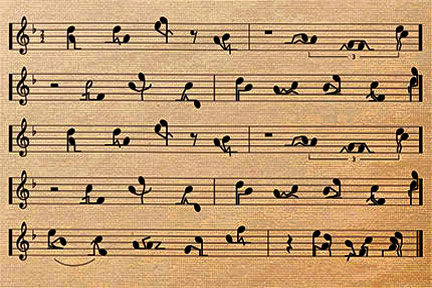 |
|
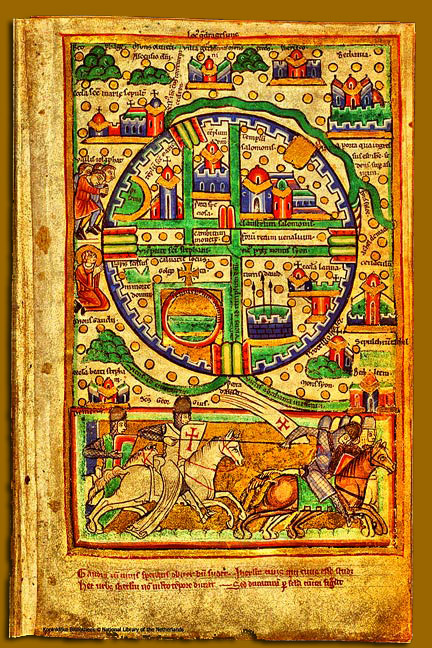 |
This is a Crusader map of Jerusalem from 1200 AD. To the Modern Mind a Map is a representation of Geography, Topography, and elements of Spatial Orientation. It's a smaller scale replica of a world as it is. Nothing could be further from the Gothic Sensibility. To the medieval, a map was information on what was important from the Christian perspective. Crosby nails it with one line: "Maps of that era were for sinners, not navigators; they were more an expressionist portrait than a scale drawing." A map existed as an expression of the Inner Cosmos. It was what every thinking Christian knew about the world. Anything off the map was Unknown and therefore part of the Devil's Domain. "Beyond here there be Dragons," was the legend the cartographer used. Notice how, to the Kiki Mentalité, Jerusalem seems like a Perfect Circle divided Perfectly into Four? That's an Image which appears over and over in Christian Iconography, from the Nimbus which appears behind the Head of Christ, to the Eucharist Raised Up. Roll over the image to see a map of what Jerusalem actually looked like in 1200. Medieval mapmakers did sometimes use a Grid, but that served only as "an aid to reproduce mariners' sketches." It was only after Ptolemy's Geographia made it back into the West in 1400 that the Gridwork became a model of "coordinates on the surface of the earth, calculated in relation to fixed stars." Once the Spics and the Portageeze started using Degrees to chart spatial boundaries in and on the high seas the way was clear to go anyplace on the globe and know Where you are and When. Because a Gridwork Map is also a Calendar and a Clock. Crosby insists that the greatest ally to Quantification is Vision. The Crusader Map is not aimed at our Sense of Vision; it is aimed at our Soul's Intuition that the Cosmos is impregnated with a Transcendent Meaning which hides behind the things of the world which can be Seen. It's an artifact of Qualification, not Quantification. All of this is about the invention of Written Records of various perceptions: Numbers, Music, Maps - all discriminated thru Vision. |
|
|
|
But "It's Money that Matters." Crosby calls Money one of the most "shattering simplifying ideas of all time." Money Quantifies Everything. From Jesus to Pussy. The Euro-Medieval did not Introduce Money but it did introduce the Idea of "Money of Account." What we call "Double Entry Bookkeeping" which Accounts for both Assets and Liabilities but keeps them Separate but Synchronized. It's an Abstraction of All Financial Transactions and does for Finance "what measures did for music and minutes for time - a common Unit of Measure." A Quanta. Money of Account is an abstraction used for Keeping Books and Records - not for exchanging Money. Double Entry Bookkeeping is a "mirror in which the adept sees both himself and others." Money In - Money Out = Money Left = Profit. Quanta creates Bidnez. |
|
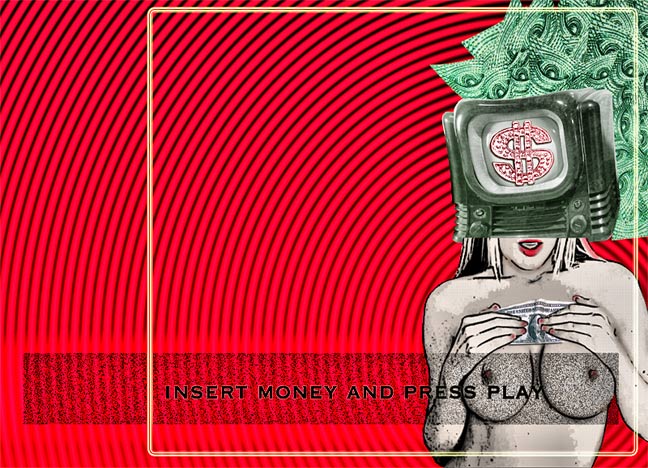 |
|
 |
|
Al Crosby's book: The Measure of Reality: Quantification and Western Society, 1250-1600 has a hundred ideas which stop you in your tracks. None bigger than this: "Ever since, Bookkeeping has had a pervasive influence on the way we think, especially on our practice of dividing things into Black and White, Good and Evil, This or That. In the past 7 centuries bookkeeping has done more to shape the perception of more bright minds than any single innovation in Philosophy or Science." So it is, in Fact, Money that Matters. Emerson once wrote: "Money, which represents the prose of life, and which is hardly spoken of in parlors without an apology, is, in its effects and laws, as beautiful as roses." Italian Merchants would begin their Account Ledgers with: "In the Name of God and of Profit." It is also interesting to note that Bookkeeping began as Travel Diaries kept by Caravan Merchants as records of the day's events. By 1366 the new Decimal System recently adopted in Europa, and its Hindu-Arabic Number Symbols, began to appear in these Diaries along-side the Narratives. Soon the Narratives shrunk as the Numbers took over the books and Bookkeeping as well as its Science - Accounting - was hatched. Since Profit is based on Precision, a new attitude towards Numbers edged out the old Qualia and its Mythological Baggage and the Abstract nature of Numbers took hold. Profit/Loss became the model for Win/Lose. But more than all of this was the feelings of Control and Power which Financial Thinking let loose upon the West. Maybe everything could be related to Money. To Capital. And then is born the Question of Who should Control Capital. And How? |
|
|
|
Why did this move from Qualia to Quanta happen in the West and not one other of the more advanced civilizations like China, India, or Arabia? Maybe because the West was so diverse and lacked "firmness in political, religious, and cultural authority." The West had long resisted Authoritarian Control over matters of Intellect. So we have a History which is fat with constant challenges to "old order thinking." Quantification and Secularization happened first in the West because even the Elites of "Cathedral or Palace," desperately needed the new skills which were being developed by Mathematicians, Musicians, Map-Makers, Merchants and Money. The movement from a Qualia Mentalité to the Mindset of Quantification took us from the Subjective to the Objective. From the Symbolic to the Descriptively Measureable. Rationalism triumphs from this movement. "Written records possess an independence that words rarely do; they can contradict your fondest wishes." They force us to put aside our Myths and other Qualia to understand the World as it is seen in its Quanta. |
|
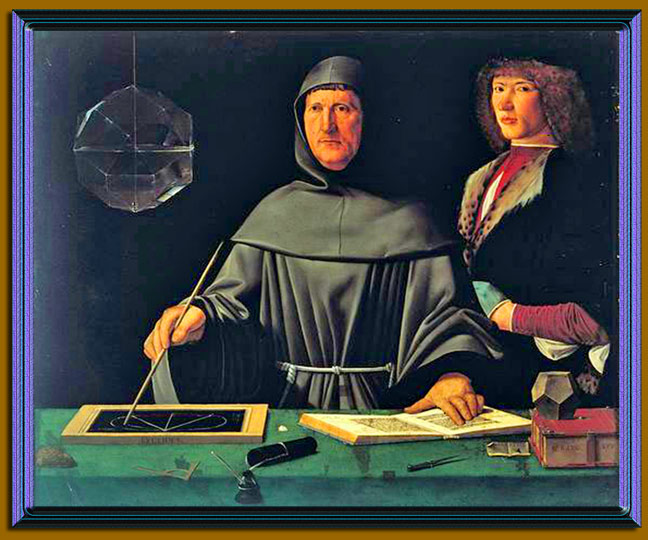 |
|
|
Use your Browser to go back or Click on this to read the Last Chapter of the Entzauberung der Welt. The Disenchantment of the World.
|
|
|
|
|
|
|
|
|
|
|
|
|
|
|












